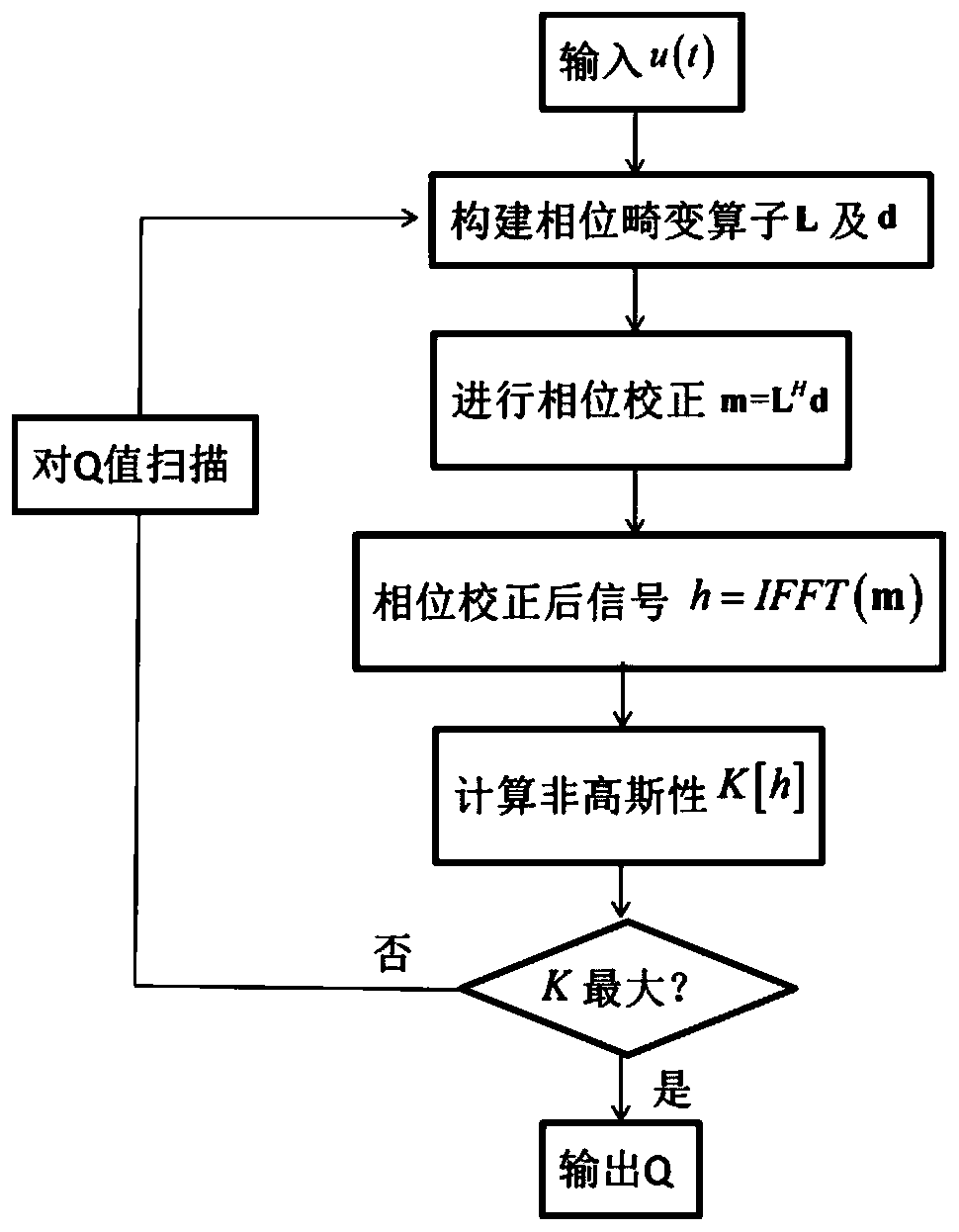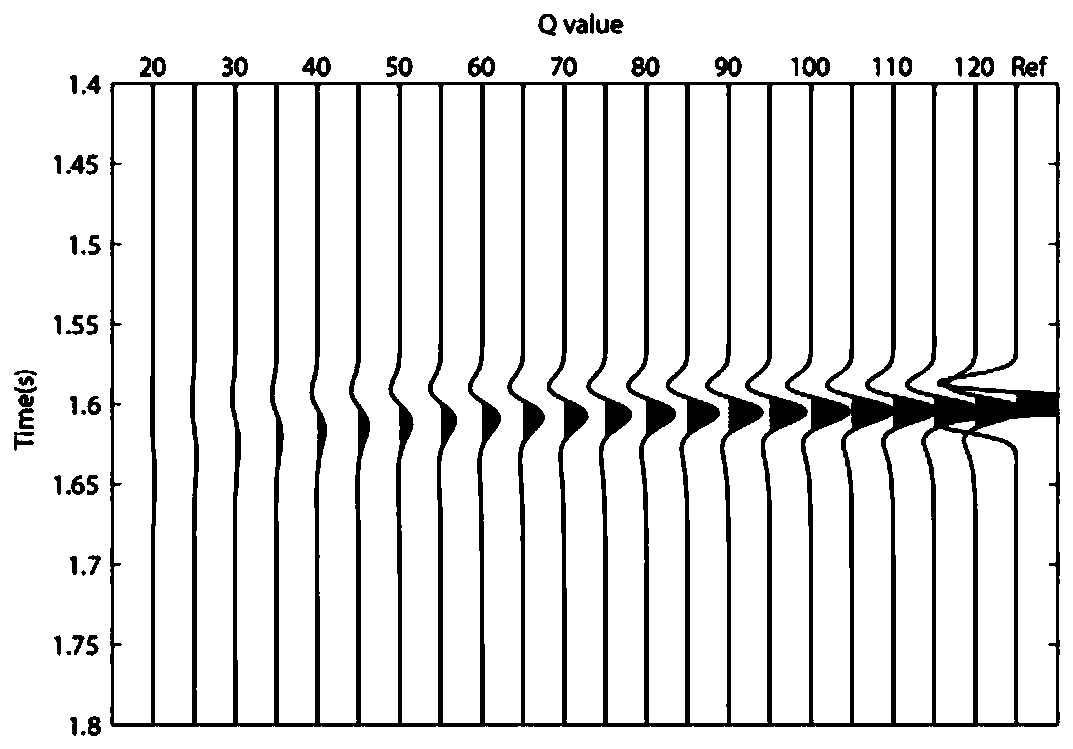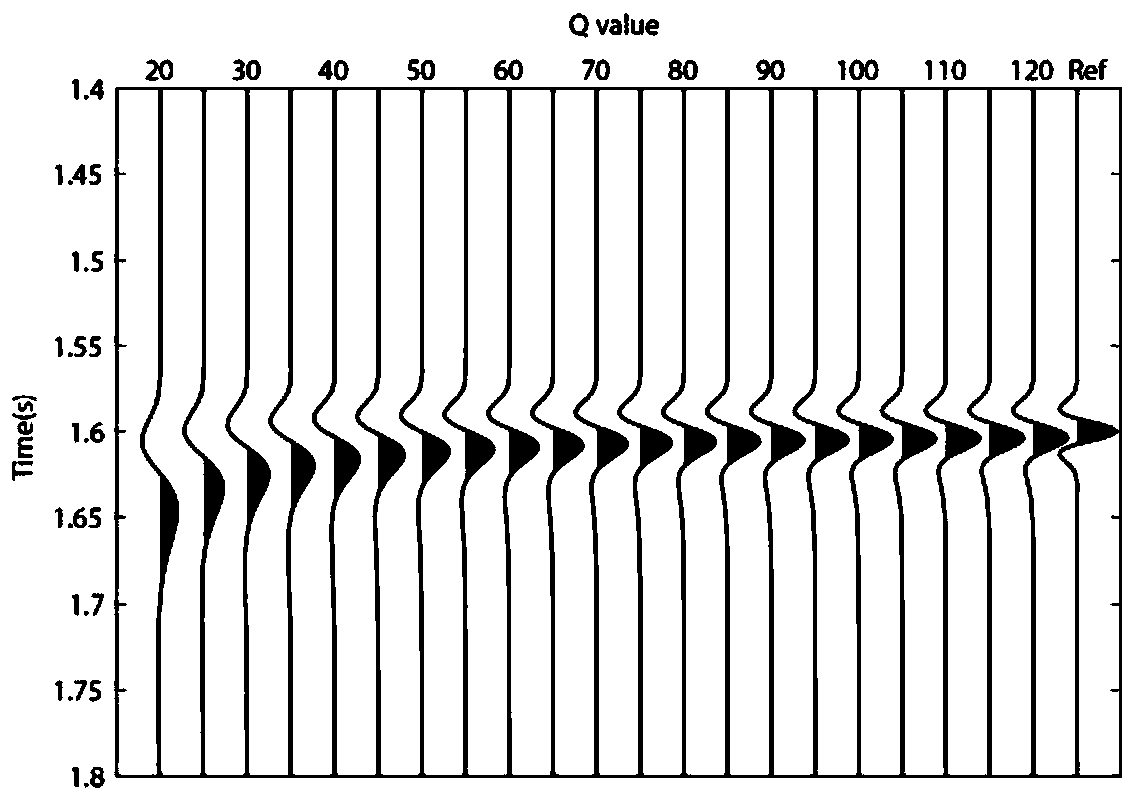A method for estimating the q value of seismic signals based on non-Gaussian maximization
A seismic signal and Gaussian technology, applied in seismic signal processing, seismology, geophysical measurement, etc., can solve problems affecting attenuation compensation or fluid identification accuracy, affecting Q value estimation accuracy, reflection coefficient white noise, etc., to achieve effective Good for high resolution, stable Q value distribution, and overcoming instability
- Summary
- Abstract
- Description
- Claims
- Application Information
AI Technical Summary
Problems solved by technology
Method used
Image
Examples
Embodiment
[0039] The steps of the estimation method of seismic signal Q value based on non-Gaussian maximization are as follows:
[0040] (1) Study the attenuation process of seismic signals, and analyze the relationship between attenuation signals and non-Gaussian properties;
[0041] (2) Scan the Q value, in order to avoid the influence of the instability of the amplitude compensation on the non-Gaussian, only do the phase correction;
[0042] (3) Calculate the non-Gaussianity of the phase-corrected seismic signal. When the non-Gaussianity is maximized, a stable quality factor Q value estimation result can be obtained, which serves for subsequent attenuation compensation and reservoir fluid identification.
[0043] Due to the heterogeneity and viscosity of the medium, the signal The absorption decay process can be expressed as:
[0044]
[0045] where H(0,ω) is spectrum, is the seismic signal after amplitude attenuation and phase distortion, Q(t) is the quality factor, ω is ...
PUM
 Login to View More
Login to View More Abstract
Description
Claims
Application Information
 Login to View More
Login to View More - R&D
- Intellectual Property
- Life Sciences
- Materials
- Tech Scout
- Unparalleled Data Quality
- Higher Quality Content
- 60% Fewer Hallucinations
Browse by: Latest US Patents, China's latest patents, Technical Efficacy Thesaurus, Application Domain, Technology Topic, Popular Technical Reports.
© 2025 PatSnap. All rights reserved.Legal|Privacy policy|Modern Slavery Act Transparency Statement|Sitemap|About US| Contact US: help@patsnap.com



